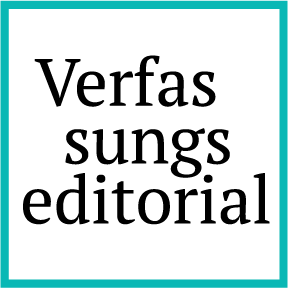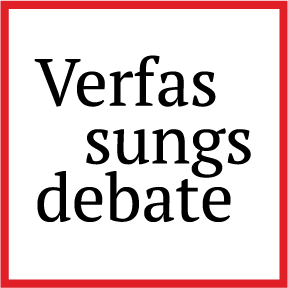Reconciling EU Copyright Protection With the Right to Research
Why We Need a General Research Exemption (Now!)
In today’s data-driven information society, the freedom to access and (re-)use diverse knowledge resources – from literary and artistic works to data collections – is indispensable for research. As digitisation pervades more and more societal subsystems, researchers can only analyse developments and provide new insights, if a sufficiently broad and representative spectrum of knowledge resources is available. However, information required for research is often subject to specific regulations that limit access and (re-)use. For instance, copyright and sui generis database rights can pose substantial hurdles. Once information is embedded in a protected work of authorship, access and (re-)use may be conditioned by the exclusive rights of reproduction and communication to the public set forth in the 2001 Information Society Directive (“ISD”). The 1996 Database Directive (“DBD”) grants similar protection against unauthorised data extraction and re-utilisation once substantial investment in the obtaining, verification or presentation of database contents has taken place.
Considering the rapid evolution of digital technology and changing research approaches, it is doubtful whether the current EU copyright acquis offers sufficient support for research that requires access to protected knowledge resources. With the text and data mining (“TDM”) provisions in the 2019 Directive on Copyright in the Digital Single Market (“CDSMD”), EU legislation has taken a first step in the right direction. However, the TDM rules are very specific. They concern a specific research method and set forth specific access and use conditions. To this day, a general research clause is missing that allows researchers to do their job in the current information society and contribute to the improvement of societal conditions – regardless of constantly changing technologies and access routes to knowledge resources. The time is ripe to devise this umbrella clause. The following analysis traces its conceptual contours.
Existing research provisions
A central element of the existing copyright/research interface is Article 5(3)(a) ISD:
“Member States may provide for exceptions or limitations to the rights provided for in Articles 2 and 3 [the reproduction right and the right of communication to the public] in the following cases: (a) use for the sole purpose of illustration for teaching or scientific research, as long as the source, including the author’s name, is indicated, unless this turns out to be impossible and to the extent justified by the non-commercial purpose to be achieved[..]”
Evidently, Article 5(3)(a) is not confined to specific forms of research, or specific research tools and methodologies. It deals with scientific research in a broad, general manner. The same can be said about the corresponding provision in Article 9(b) DBD. Nonetheless, a closer look reveals several conceptual problems.
Problem areas
First, Article 5(3)(a) ISD is a “may” provision. Member States are not bound to implement the exemption of use for scientific research purposes in a standardised form. Countries may refrain from adopting the research privilege altogether. Countries may also take a cautious approach and add further conditions for invoking the use privilege at the national level. The regulatory framework for use in scientific research contexts is thus highly fragmented. In the absence of a fully harmonised umbrella clause at EU level, national research provisions differ in relation to beneficiaries, works covered, the scope of permitted use, the exclusive rights covered (reproduction and/or communication to the public), conditions of applicability, remuneration requirements and safeguards against contractual override. Quite clearly, this diversity is not conducive to cross-border research activities in the internal market. Research use that is permissible in one Member State may amount to infringement in other Member States that have followed a more restrictive implementation strategy.
Second, legal uncertainty with a corrosive effect on research activities can arise from conceptual inconsistencies. In particular, it is unclear whether the illustration requirement only concerns teaching or is intended to cover use for research purposes as well. On the one hand, Article 5(3)(a) ISD may be understood to generally permit “use for the sole purpose of […] scientific research.” On the other hand, it can be argued that the provision only covers “use for the sole purpose of illustration for […] scientific research.” Divergent national implementation practices show that both interpretations have informed lawmaking in EU Member States.
Third, the requirement of use for a “non-commercial purpose” enhances the legal complexity. It has become a source of legal uncertainty and appears outdated, especially in light of the evolving nature of research practices that increasingly involve collaborations with private partners and public-private partnerships, often encouraged and even required by European and national research funding schemes. Recital 42 ISD offers the following clarification with regard to the gatekeeper criterion of non-commercial use:
When applying the exception or limitation for non-commercial educational and scientific research purposes, including distance learning, the non-commercial nature of the activity in question should be determined by that activity as such. The organisational structure and the means of funding of the establishment concerned are not the decisive factors in this respect.
This guideline can easily lead to a scrutiny of each individual research project in the light of the “non-commercial purpose” requirement. If the criterion is, moreover, applied strictly, the mere possibility of research yielding results that can be exploited commercially may already bar researchers from invoking the research exception. As a result, even the commercialisation of research output by technology offices of publicly funded research organisations may create legal complications for researchers who initially – while conducting the research – relied on the research exemption under the assumption of non-commercial use and learnt only afterwards – when the project was completed – that the results would be exploited commercially. While more flexible approaches are conceivable, substantial legal uncertainty remains in the light of decisions of the Court of Justice (“CJEU”) that take a strict interpretation as a starting point.
Fourth, the copyright acquis surrounding Article 5(3)(a) poses additional hurdles. The overarching requirement to ensure compliance with the three-step test laid down in Article 5(5) ISD gives rise to the question whether researchers must explain – potentially even with regard to each individual project – that the intended use of resources enjoying protection constitutes a “special case.” Moreover, they may have to rebut allegations that the use carried out in a research project has a corrosive effect on the normal exploitation of protected works and/or unreasonably prejudices legitimate rightsholder interests.
Fifth, legal uncertainty and use restrictions can follow from technological protection measures that serve as electronic fences preventing access and use for research purposes. Article 6(4), subparagraph 4, ISD amplifies the corrosive effect of this additional legal issue. According to this provision, contractual terms prevail over the research exemption in Article 5(3)(a). This decision of the EU legislature exposes researchers to contractual clauses that may exclude use for research purposes altogether.
Perceptions of researchers, research organisations, and publishers
A survey conducted in 2023 (pp. 889-893) to shed light on experiences of researchers (962 responses), research-performing organisations (“RPOs”, 583 responses) and scientific publishers (128 responses) demonstrated that the outlined legal issues are not mere theoretical concerns. With regard to the need for sufficiently flexible research rules in EU copyright and sui generis database law, the results of the RPO survey are of particular interest. 47.8% of the respondents (239 out of n=500) indicated a strong preference for the introduction of an open-ended umbrella clause that would generally permit the use of protected knowledge resources for all kinds of research purposes (p. 121). 33.6% of the respondents (168) stated that they would support (“rather favour”) the introduction of such a general clause. Considering the high number of answers in this category (n=500), this is a clear statement in favour of an open-ended clause capable of supporting scientific research in general – without limiting privileged use to specific circumstances, such as specific research settings, research tools or research resources.
The survey also confirmed lawful access obstacles. The researcher survey revealed that 80% of the respondents (n=635) faced significant access barriers due to a lack of subscriptions to copyrighted knowledge resources (p. 926). 59.6% of the researchers also indicated that they were unable to access protected knowledge resources on the internet because these materials were behind a paywall or electronic fence. This is a robust result based on a large number of responses (n=473). The RPO responses confirmed subscription shortage and paywall problems (p. 1013). RPOs were frequently (every week or month) or somewhat frequently (every three to six months) confronted with situations where researchers were unable to obtain access to protected knowledge resources because of a lack of subscriptions (69.9%, 324 out of n=464) or insurmountable paywalls (75.0%, 333 out of n=444). Not surprisingly, the access issue is high on the public policy agenda of RPOs. 47.3% of the respondents (232 out of n=491) were strongly in favour of giving researchers access to protected knowledge resources, even if they are behind a paywall, under strict public interest conditions defined by law. 34.4% (169 respondents) supported (“rather favour”) the introduction of access rights in cases of overwhelming public interest (p. 121).
The RPO survey also offers some clarifications with regard to the invocation of research provisions in the case of public-private partnerships. While the majority of RPOs (60.3%, 179 out of n=297) did not report specific problems arising from industry collaborations (p. 1013), the remaining 39.7% indicated that it occurred very frequently (14.1%, 42 respondents) or somewhat frequently (25.6%, 76 respondents) that their researchers refrained from using protected knowledge resources because they collaborated with industry partners and felt that use permissions given in copyright law would no longer apply. Against this backdrop, the majority of RPOs expressed a preference for clarifying in the EU acquis that copyright exceptions for research cover not only non-commercial research but also research conducted in the framework of public-private partnerships (p. 1017).
Turning to academic publishers, it becomes clear that the views of rightsholders and the research community differ considerably. In the group of commercial publishers, 75.7% would not at all support the introduction of an open-ended umbrella clause that permits scientific research use (p. 1126). 10.8% would rather reject it. With regard to the more specific issue of paywalls and electronic fences, the survey results revealed notable opposition from academic publishers. Particularly, commercial publishers (78.9%, 30 respondents) expressed serious concerns about modifying the current approach that lets technological protection measures prevail over the research exception in Article 5(3)(a) ISD (p. 1127). Finally, the survey showed that publishers are predominantly against a departure from the traditional non-commercial use requirement. The opposition was particularly strong among commercial publishers – with 74.4% (29 respondents) strongly opposing, or generally rejecting, a more flexible approach (p. 1126).
Contours of a reform agenda
These results show that a careful balancing of interests is necessary. Ideally, amendments of existing research rules offer stronger support for scientific research while safeguarding the legitimate interests of academic publishers. A balanced approach could:
- clarify that the requirement of use as an “illustration” in Article 5(3)(a) ISD and Article 9(b) DBD only concerns the teaching branch of the use privilege and does not relate to scientific research;
- abandon the outdated requirement of use for a “non-commercial purpose” and, instead, follow an approach that offers room for public-private partnerships, such as the approach taken in Article 3(1) CDSMD;
- recalibrate lawful access criteria. Instead of requiring access permissions of each individual research institution participating in a transnational research project in the internal market, it could be deemed sufficient that one participating consortium partner has a subscription or can rely on a national copyright exception;
- clarify that, regardless of the volume of use, scientific research constitutes a “special case” in the sense of the three-step test of Article 5(5) ISD because of the fundamental rights underpinning following from Articles 11(1) and 13 of the EU Charter of Fundamental Rights;
- declare the fourth subparagraph of Article 6(4) ISD inapplicable to use for the purposes of scientific research, as already done in Article 7(2) CDSMD, and grant researchers the right to circumvent technological protection measures in case rightsholders fail to ensure that the use privilege for scientific research remains effective when technological protection measures are applied;
- declare any contractual provision contrary to use privileges for scientific research unenforceable, as already stated in Article 7(1) CDSMD.
In contrast to the current, optional research exceptions in Article 5(3)(a) ISD and 9(b) DBD, a more robust exemption with these conceptual contours should constitute a mandatory “shall” provision to ensure a harmonised application across the internal market and comparable conditions for research teams in all Member States.



